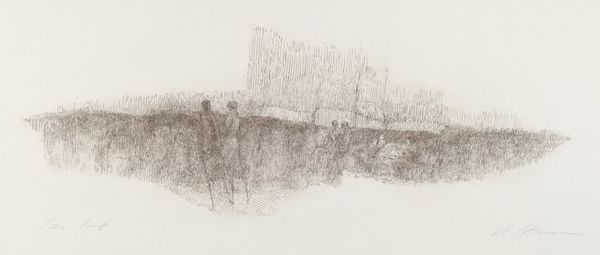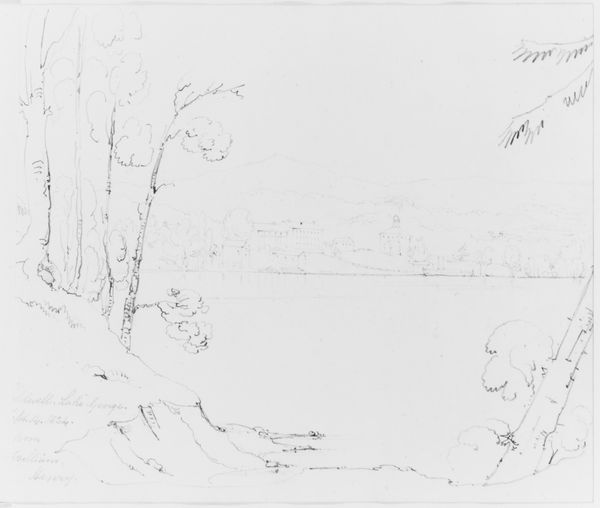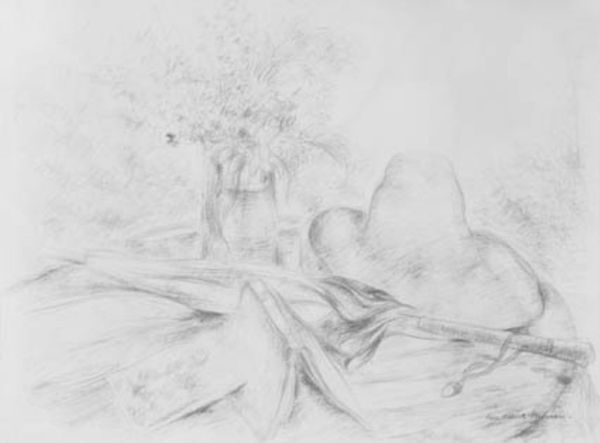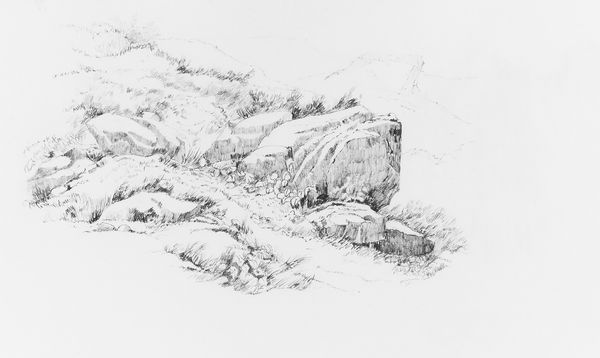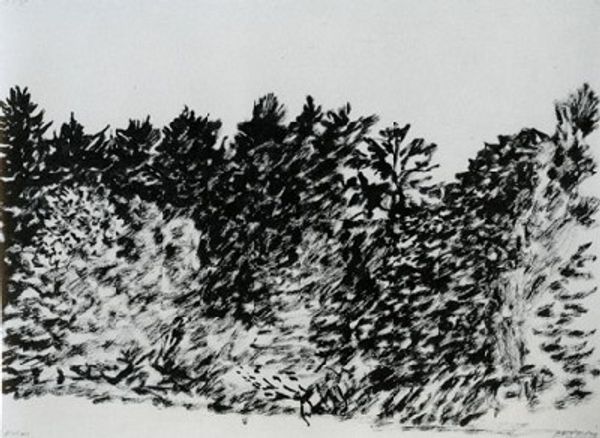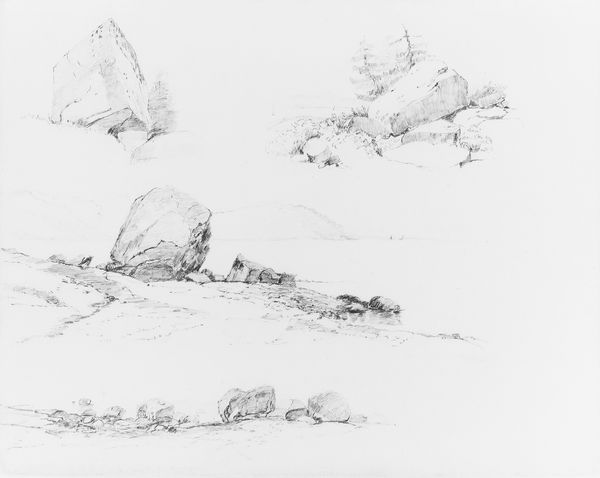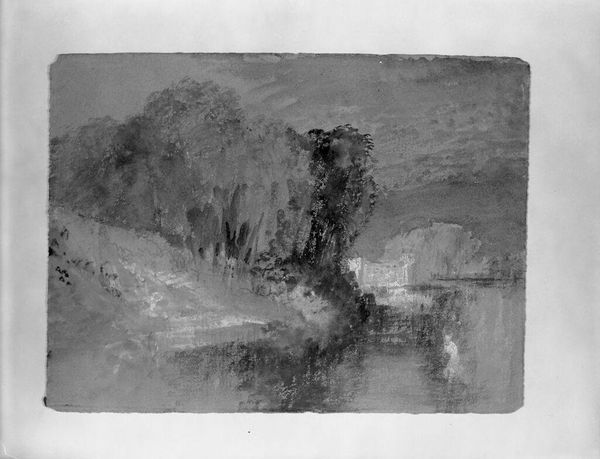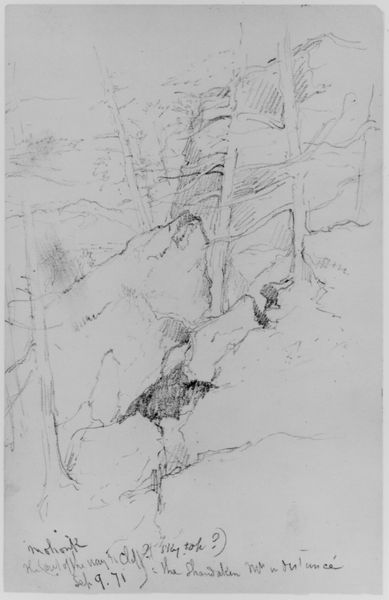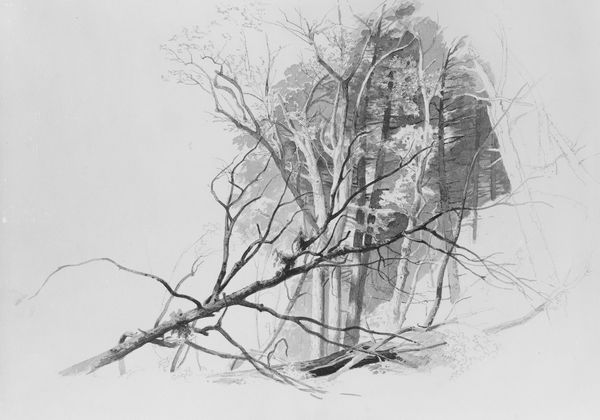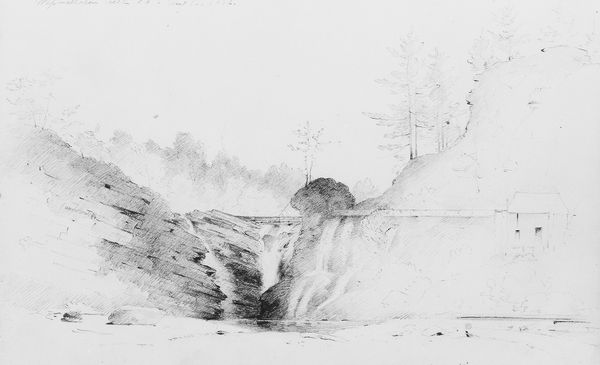
drawing, pencil
#
tree
#
drawing
#
lake
#
pencil sketch
#
landscape
#
charcoal drawing
#
pencil
#
realism
Dimensions: 11 9/16 x 15 11/16 in. (29.4 x 39.8 cm)
Copyright: Public Domain
Editor: We're looking at Albert Bierstadt's "Study of Rocks and Trees by a Lake," likely created between 1830 and 1902. It’s a delicate pencil drawing currently held at the Metropolitan Museum of Art. The scene is quiet, almost hazy, rendered in soft pencil strokes. What strikes you about this piece? Curator: Well, seeing a drawing like this, I immediately think about the role of landscape imagery in shaping American identity. Bierstadt, famous for his grand, sweeping vistas of the American West, often created smaller, more intimate studies like this one. But even here, the act of studying the landscape – rocks, trees, and water – contributes to an understanding, almost an appropriation, of the natural world. Editor: Appropriation in what sense? Curator: In the sense that portraying the land becomes a way of claiming it, both aesthetically and politically. Think about the Hudson River School, with which Bierstadt is often associated. Their paintings promoted the idea of Manifest Destiny. Does seeing this drawing make you consider its role in westward expansion? Editor: It’s interesting to consider the political undercurrents, but I hadn’t explicitly connected it to Manifest Destiny. It feels more like a quiet observation of nature than a grand statement. Curator: Perhaps. But even quiet observation has its context. The rising popularity of landscape art coincided with increased westward settlement and industrialization. This drawing is therefore more than just trees and rocks, it also becomes a part of an artistic discourse justifying an idealized notion of the American wilderness during the late 19th century. The existence of these landscapes on museum walls helped establish its role in shaping cultural memory. Editor: So, even a seemingly simple sketch plays a role in a larger narrative about America’s relationship with its land. Thanks, I'll certainly look at Bierstadt’s work differently now. Curator: Indeed. Hopefully it can provide food for thought for you as you move forward in the world of art history.
Comments
No comments
Be the first to comment and join the conversation on the ultimate creative platform.
